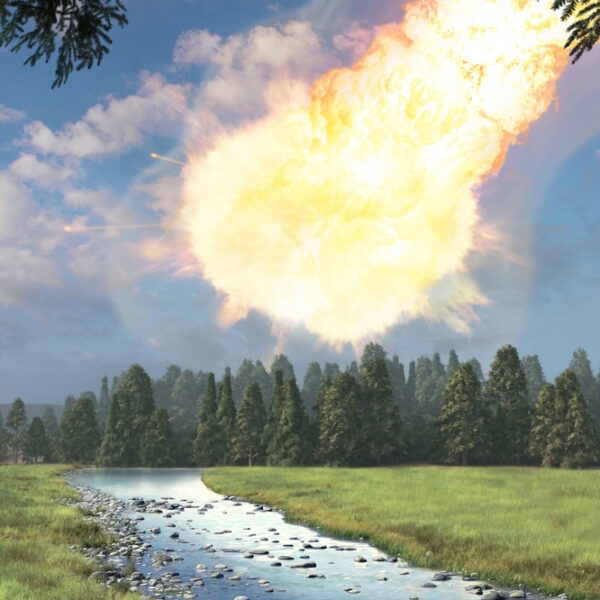On June 30, 1908, an asteroid flattened an estimated 80 million trees in Siberia over 830 square miles (2,150 square kilometers). Dubbed the Tunguska event, it is considered the biggest asteroid impact in recorded history. Yet no one has ever found the asteroid fragments or an impact site.
The asteroid lit up the skies in a remote, sparsely inhabited region near the Podkamennaya Tunguska River. It unleashed a 10 to 15 megaton explosion — similar in size to the 1954 Castle Bravo nuclear bomb test, the fifth-largest nuclear detonation in history. “The sky was split in two, and high above the forest the whole northern part of the sky appeared covered with fire,” an eyewitness reported.
One popular theory is that the asteroid formed Lake Cheko, a freshwater lake about 5 miles (8 kilometers) from the explosion epicenter. The lake is about 1,640 feet (500 meters) wide and 177 feet (54 m) deep. Luca Gasperini, research director at the National Research Council of Italy, and colleagues said the lake’s cone-like shape and depth resembled an impact crater. In a study published 2012 in the journal Geochemistry, Geophysics, Geosystems, they estimated that the sediments at the bottom of the lake had been building for 100 years, while evidence of trees at the bottom of the lake indicate the waterhole covers an old forest.
“Writer Fuel” is a series of cool real-world stories that might inspire your little writer heart. Check out our Writer Fuel page on the LimFic blog for more inspiration.


